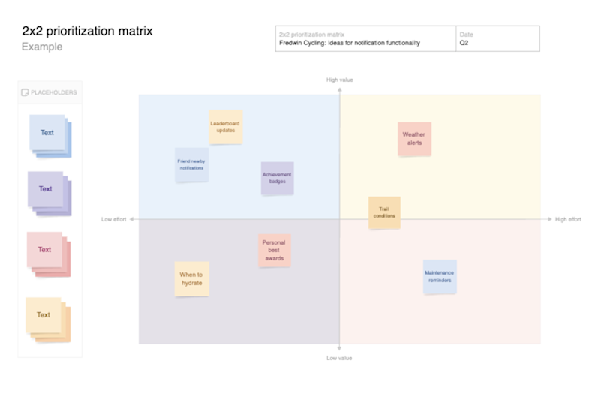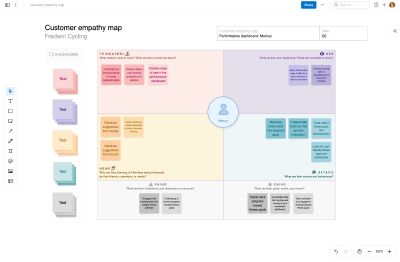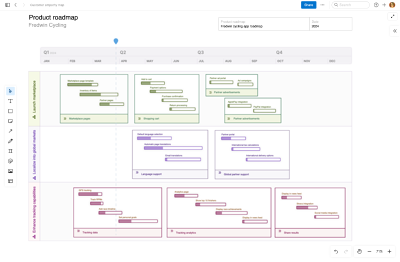Popular templates
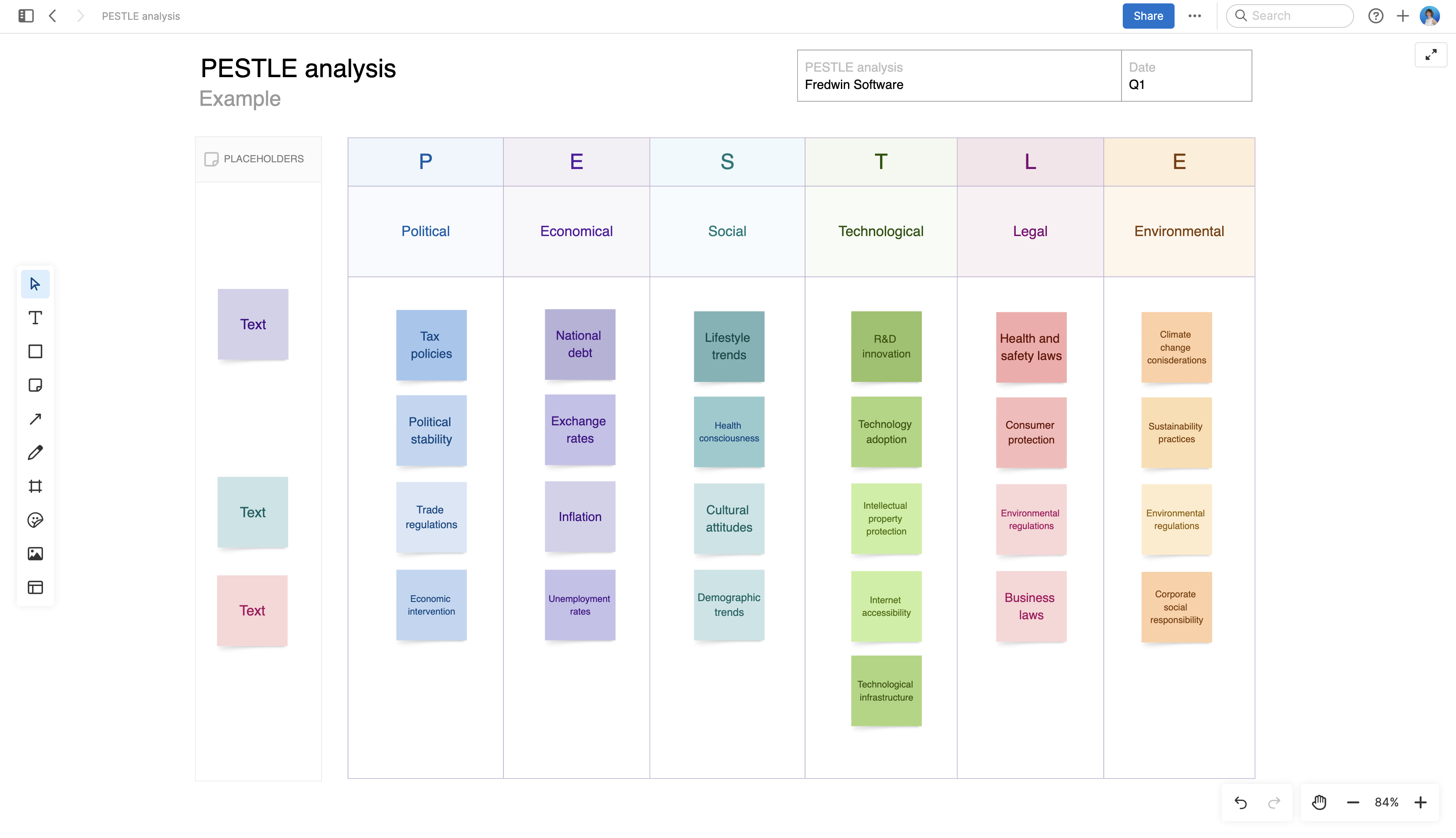
Competitive analysis
Researching competitors involves looking at established players in the market and alternative solutions used by prospective customers. By assessing competitor strengths and weaknesses, you can learn how to differentiate your product.
Read more: A guide to competitive analysis
Customer research
Customer research drives product innovation by enabling you to glean insights directly from your target audience. This helps product teams build empathy for the problems customers want to solve. It can also reveal your customers' true feelings about your product.
Read more: A guide to customer research
How to do market research as a product manager
The market research process will vary in complexity depending on the scale and extent of your plans. Launching a brand new offering often calls for a comprehensive analysis of the entire market — in other scenarios, like enhancing established products, a lightweight look at the current competition could suffice. But in general there are four essential steps for conducting successful market research:
Define your objectives. In order to collect the right data, you must first establish what you are trying to learn. Clarify the focus of your market research by listing out the questions you have about a problem or opportunity, then distill this into a goal statement.
Plan and conduct research. Figuring out where to find the information you need. You can employ a mix of primary and secondary sources — primary includes interviews, surveys, and focus groups while secondary includes sources like industry publications, trade associations, and market reports.
Analyze and share the results. Once you have gathered your data, review it closely to uncover trends and other insights. Summarize your findings and make them accessible to your team. You might even create a presentation to showcase what you discovered.
Plan next steps. Market research should inform action. Use your newfound learnings to build customer personas, form a well-rounded product strategy, or prioritize product decisions that will deliver more value to the market.
Many product managers expedite their research and analysis by using pre-built templates. If you want to get started fast, download one of our customizable research templates or the SWOT analysis whiteboard template. This framework is helpful both for identifying what to research and organizing your findings for discussion after research is complete.
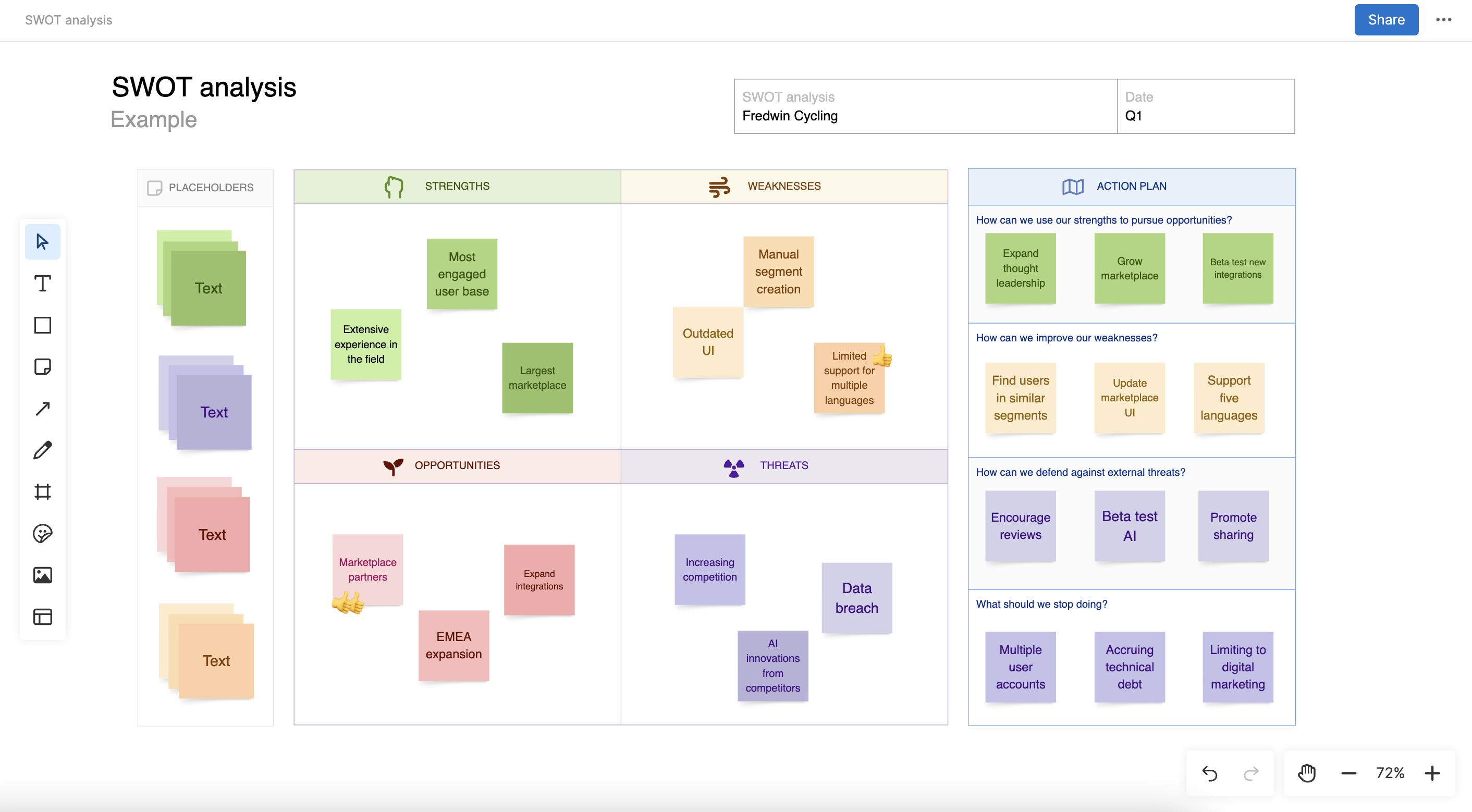
Market research is not a one-time endeavor. It is something to continually invest in as conditions change and your product grows. But the insights you gain as a product manager should more than make up for the effort that conducting market research requires. When you are able to paint a full picture of the market, you will have more clarity on how your product fits into it.
FAQs about how to do market research
What does a market research analyst do?
A market research analyst gathers and analyzes data about market trends, consumer preferences, and competitive landscapes — helping businesses make informed decisions. This role is crucial for organizations looking to understand their target audience, assess demand for products or services, and develop effective marketing and business strategies.
How can product managers define their target market?
Product managers can define their target market through research, analysis, and a deep understanding of their potential customers. This entails conducting market research, creating customer personas, gathering direct and indirect feedback from prospective customers, and analyzing competitors.
What's the difference between primary and secondary research?
Primary research involves gathering new data directly from your target audience through surveys, interviews, or empathy sessions. Secondary research includes analyzing existing data collected from other sources such as reports, publications, or studies.
What questions should a product manager ask when conducting market research?
Understanding your market is core to deciding what you want to deliver and the value it will bring. Here are some essential questions to get you started:
What problems do potential customers face and how can your product help?
Who are the target customers and what do they need?
Who are your competitors and how can you stand out?
What market trends and opportunities can you leverage?
What is the right price and value proposition for your product?
How can customers easily access and buy your product?
What might prevent customers from adopting your product, and how can you overcome those barriers?
How can you gather and use customer feedback for improvements?
